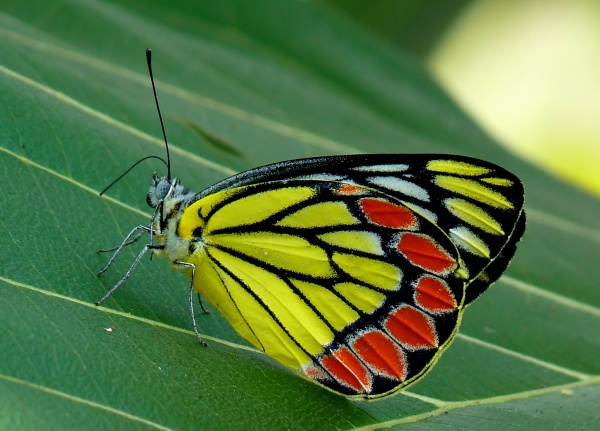Facts About Delias eucharis
The common Jezebel, scientifically known as Delias eucharis, is a medium-sized butterfly belonging to the pierid family. This striking insect can be found fluttering across various regions of South and Southeast Asia, including countries such as India, Sri Lanka, Indonesia, Myanmar, and Thailand. It is one of over 225 species within the Delias genus.
Both male and female common Jezebels exhibit wingspans ranging from 6.5 to 8.5 cm, though there are discernible differences between the sexes. Males possess white wings adorned with distinct black veins and patterns on both the forewings and hindwings. Females have a similar appearance but display broader black markings.
These butterflies are known for their migratory behavior and thrive in diverse habitats, from temperate hill forests and tropical rainforests to dry woodlands and coastal areas. In India, they can be found at elevations reaching up to 7,000 feet.
One of the most fascinating aspects of the common Jezebel is its vibrant coloration, which acts as a warning to predators about its unpalatability. This is due to the toxins acquired from its host plants during the larval stage. Interestingly, other species, such as Prioneris sita, mimic the Jezebel's appearance to deter predators.
The life cycle of the common Jezebel is quite captivating. It begins with egg-laying, followed by the larval stage during which caterpillars consume mistletoes like Loranthus. This feeding habit has led to the suggestion that these butterflies could be utilized for controlling mistletoe populations. After the larval stage, the caterpillars pupate and eventually emerge as adults.

 Afghanistan
Afghanistan